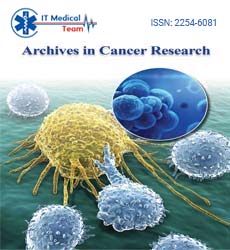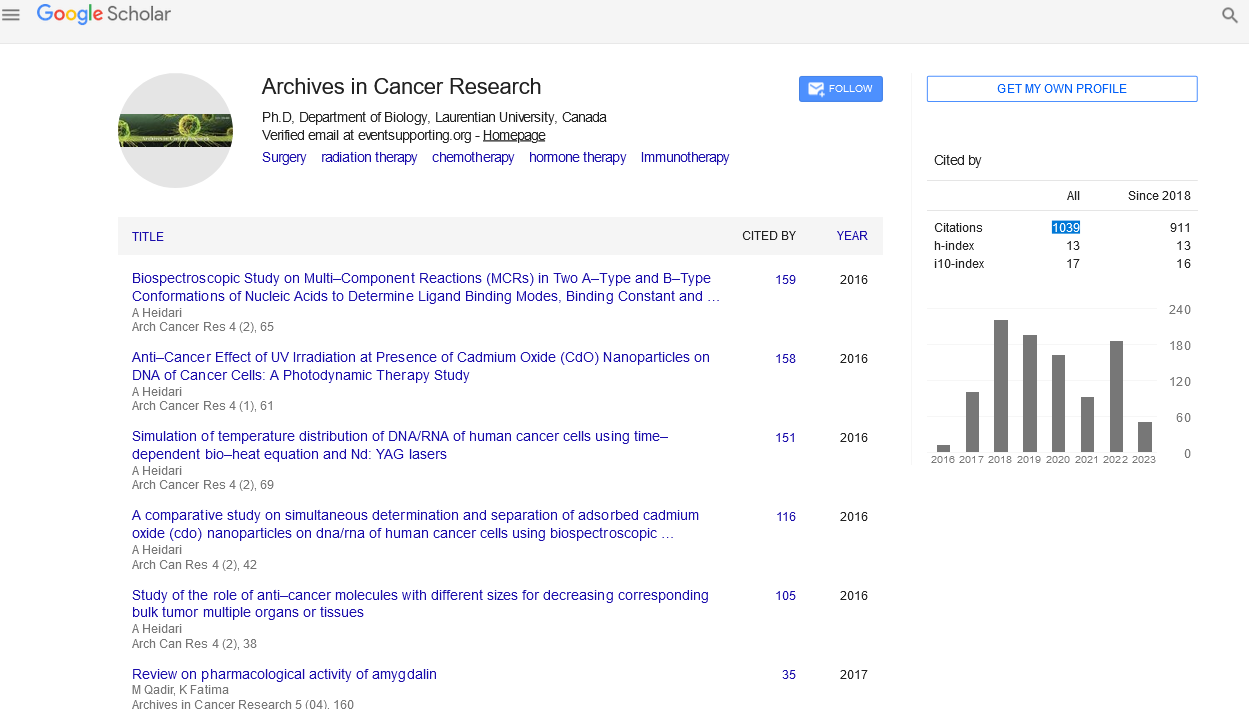Abstract
It remains unknown whether or not the administration of aminoalkanoic acid enzyme inhibitors (TKIs) targeting BCR-ABL1 once allogeneic haematopoietic cell transplantation (HCT) is related to improved outcomes for patients with chronic Myelogenous leukaemia during this written account study, we have a tendency to analyzed clinical outcomes of 390 adult patients with CML UN agency underwent transplantation between and 2014 and received maintenance TKI following compared with no TKI maintenance as according to the middle for International Blood and Marrow Transplant analysis. All patients received TKI medical care before HCT. The bulk of patients had an illness standing of 1st chronic part The study was conducted as a landmark analysis, excluding patients the eighty nine patients UN agency received TKI maintenance, seventy seven received one TKI and therefore the alternative twelve received multiple serial TKIs. The foremost common TKIs used for maintenance were or overall survival (maintenance, sixty one versus no maintenance failed to take issue considerably between patients receiving TKI maintenance or no maintenance. These results remained unchanged in statistical procedure and weren't changed by illness standing before transplantation. Finally, our information landmark analysis doesn’t demonstrate a big impact of maintenance medical care on clinical outcomes. The optimum approach to TKI administration within the post-transplantation setting in patients with CML remains undetermined.
Keywords
Myelogenous leukaemia; Leukemic stem cells; Measurable residual
disease; Acute lymphoblastic leukaemia
Introduction
Maintenance amino acid enzyme substance (TKI) medical care
failed to considerably impact outcomes of allogeneic biological
process cell transplantation (allo-HCT) performed to treat chronic
Myelogenous leukaemia. Results weren't changed by the standing
of sickness before transplantation. Allogeneic haematogenic cell
transplantation (allo-HCT) remains the only real notable curative
treatment for CML; but, given the success of TKI medical care and
therefore the risks related to transplantation, allo-HCT is presently
reserved for patients with accelerated part (AP) or blast part (BP)
CML and people with TKI failure or intolerance in chronic part (CP) malady. Despite the addition of TKIs before allo-HCT, posttransplantation
patient outcomes haven't modified considerably,
with malady relapse the leading explanation for transplant failure
[1,3].
Maintenance medical care, outlined as medical care initiated
whereas the patient remains in complete remission, could be a
promising approach to reducing the incidence of relapse once
HCT [6]. The administration of TKIs as maintenance once allo-HCT
for patients with risky urban center chromosome-positive (Ph+)
leukaemia has been investigated in many studies seven, and this
approach is already being adopted into clinical follow.. Given the ever-changing role of HCT within the management of CML and
therefore the medical care, outlined as medical care initiated
whereas the patient remains in complete remission, could be a
promising approach to reducing the incidence of relapse once
HCT. The administration of TKIs as maintenance once allo-HCT
for patients with risky urban center chromosome-positive (Ph+)
leukaemia has been investigated in many studies seven and
this approach is already being adopted into clinical follow [4,5].
Though the employment of maintenance TKI once HCT was
related to improved Leukemia-free survival (LFS) associated OS
for patients with Ph+ acute lymphocytic Leukemia in an analysis
from the ecu cluster for Blood and Marrow Transplantation
(EBMT) larger studies investigation maintenance approaches in
CML square measure lacking. Given the ever-changing role of
HCT within the management of CML and therefore the increasing
use of TKIs within the post-transplantation amount, we tend
to wanted to work out whether or not maintenance medical
care with TKIs following allo-HCT is related to improved illness
management associated survival in patients with CML through
an analysis of the middle for International Blood and Marrow
analysis (CIBMTR) written record. we tend to conjointly wanted
to characterize the employment and outcomes of allo-HCT within
the management of CML in a very epoch of multiple out there
use of TKIs within the post-transplantation amount, we tend
to wanted to work out whether or not maintenance medical
care with TKIs following allo-HCT is related to improved illness
management associated survival in patients with CML through
an analysis of the middle for International Blood and Marrow
analysis (CIBMTR) written record. We tend to conjointly wanted
to characterize the employment and outcomes of allo-HCT within
the management of CML in a very epoch of multiple out there
TKIs [6].
Discussion
The CIBMTR could be a combined analysis program of the
Medical faculty of Wisconsin and therefore the National
Marrow Donor Program comprising a voluntary network of
quite 450 transplantation centers worldwide that contribute
elaborate information on consecutive allogeneic and autologous
transplantations to a centralized applied mathematics center.
Data-based studies conducted by the CIBMTR ar performed
in compliance with all applicable federal rules concerning the
protection of human analysis participants. Protected health info
issued within the performance of such analysis is collected and
maintained within the CIBMTR's capability as a Public Health
Authority below the insurance movableness and responsibleness
Act Privacy Rule.
The CIBMTR collects information that embody the following:
age, sex, illness sort, pretransplantation illness stage, date of
designation, graft type, acquisition plan, post-transplantation
illness progression and survival, development of a brand new
malignancy, and explanation for death. Information ar collected
before transplantation, a hundred days and half-dozen months
when transplantation, and annually thenceforth or till death. The
protocol of this study received a priori approval by the acceptable
Institutional Review Committee.
This was a retrospective cohort landmark study from a hundred
days when HCT to check outcomes between patients UN agency
underwent allo-HCT for CML and received maintenance TKI
medical aid and controls UN agency received no maintenance
medical aid [7-9].The first aim was to check LFS, and therefore
the secondary aim was to check rates of OS, cGVHD, treatmentrelated
mortality (TRM), and relapse in these a pair of teams. All
the outcomes ar rumoured as time to events with the point at a
hundred days when transplantation.
Multivariate Cox proportional hazards regression models for all
the endpoints (LFS, OS, relapse UTC, and cGVHD) were won’t
to compare the treatment teams. The belief of proportional
hazards for every consider the Cox model was tested exploitation
time-dependent covariates. There’s no variable violating the
proportional hazard assumption during this study. Stepwise
choice was wont to determine vital covariates that influenced
outcomes to be enclosed within the final model to urge the
adjusted treatment effects. The set of adjusting variables
for every outcome was set severally by stepwise choice with
inclusion criteria at .05. Applied mathematics significance of the
most effects was tested with level .01, accounting for multiple
comparisons across the endpoints.
Adjusted survival curves and additive incidence curves were
generated stratified on the treatment teams and weighted
averages of covariate values exploitation the pooled sample
proportion because the weight operates. These adjusted curves
represent the chance of outcomes in populations with similar
prognostic factors. The CIBMTR may be a combined analysis
program of the Medical faculty of Wisconsin and also the National
Marrow Donor Program comprising a voluntary network of quite
450 transplantation centers worldwide that contribute elaborate
information on consent this retrospective register analysis, we
have a tendency to sought-after to research the observe of TKI
maintenance medical aid following HCT in patients with CML.
Our results ensure that within the epoch of TKI medical aid, HCT
remains a curative choice for patients with CML, with encouraging
survival. However, the upkeep approach has not been universally
adopted, with solely twenty third of the patients in our cohort
receiving TKI maintenance. In a very landmark analysis from day
+100, we have a tendency to do demonstrate a profit in 5-year
clinical outcomes (LFS, OS, relapse, TRM, or cGVHD) within the
TKI maintenance cluster compared with the no maintenance
cluster. though TKI maintenance was related to a better incidence
of relapse and lower incidence of TRM at earlier time points
compared with the no maintenance cluster, these findings
didn't maintain significance once analysing 5-year outcomes or
once evaluating the impact of maintenance medical aid within
the variable Cox proportional hazards regression model. The
results of this study characterize the clinical outcomes of patients
receiving TKI maintenance and decision into question the broad
application of this approach to any or all patients with CML. The
impact of maintenance TKI didn't disagree supported sickness
standing before HCT, though we have a tendency to acknowledge
that further variations in sickness risk, additionally because the
physicians’ intent to initiate maintenance medical aid, couldn't
be accounted for with this register analysis. Notwithstanding, we
have a tendency to believe the results of this study to be vital to clinical observe, given the potential toxicities and prices related
to maintenance medical aid.
We believe that variety of vital factors influenced the outcomes
of this study. First, we have a tendency to use a landmark analysis
from day +100 following HCT to calculate all follow-up findings
and outcomes. analysis of maintenance therapies is commonly
related to inherent choice bias, as patients should be alive and
frequently while not early major complications of allo-HCT which
might confound clinical perception of the clinical impact of
maintenance approaches. By conducting a landmark analysis, we
have a tendency to excluded patients with early death, relapse,
and cGVHD, and here
A small range of studies have investigated the employment of
prophylactic post-transplantation maintenance TKI medical
aid in patients with Ph+ leukaemia early prospective trial of
imagine maintenance within the 1st year following allogeneic
HCT found this approach to be possible and related to low rates
of relapse. As several patients undergoing allogeneic HCT have
failing first-line TKIs, there's nice interest within the post-HCT
use of later generation TKIs. However, the later generation TKIs
particularly are related to inflated toxicities. A part I/II study
work nicotinic when allogeneic HCT in sixteen patients with risky
Ph+ leukaemia rumored 2-year OS and progression-free survival
of sixty nine and fifty six, severally. During this study, thirty
eighth of patients had to discontinue medical aid attributable to
toxicities that were preponderantly channel or internal organ. In
a very separate part I/II study, only 32.5% of patients eligible for
nicotinic maintenance at engraftment were able to complete the
supposed one year of medical aid attributable to early relapse,
toxicities or contradictory post-HCT complications. Toxicities will
limit period of TKI maintenance, that is believed to impact the
effectiveness of this approach though no studies up to now have
self-addressed a minimum or optimum period of maintenance
medical aid [10-15].
Conclusion
Descriptive statistics were calculated for all variables. A univariate
analysis was performed with the Kaplan-Meier estimates to
reckon OS and LFS rates. Log-rank tests were accustomed live the
variations in OS and LFS between the treatment teams. Chronic
GVHD, TRM, and relapse rates were calculable victimisation the
additive incidence functions considerately of competitive risks.
Gary’s take a look at was performed to match the variations in
additive incidence functions between the treatment teams.
Multivariate Cox proportional hazards regression models for all the
endpoints (LFS, OS, relapse TRM, and cGVHD) were accustomed
compare the treatment teams. There’s no variable violating the
proportional hazard assumption during this study. Stepwise
choice was accustomed determine vital covariates that influenced
outcomes to be enclosed within the final model to induce the
adjusted treatment effects. The set of adjusting variables for
every outcome was determined singly by stepwise choice with
inclusion criteria at .05. Applied mathematics significance of the
most effects was tested with level .01, accounting for multiple
comparisons across the endpoints. Potential interactions between
the most result and vital adjusting covariates and between main
result and donor kind were tested, showing no vital interactions
at level of Adjusted survival curves and additive incidence curves
were generated stratified on the treatment teams and weighted
averages of covariate values victimisation the pooled sample
proportion because the weight operate. These adjusted curves
represent the chance of outcomes in populations with similar
prognostic factors.
Acknowledgement
I would like to thank my professor for his support and
encouragement.
Conflict of Interest
The authors declare that there is no Conflict of interest.





